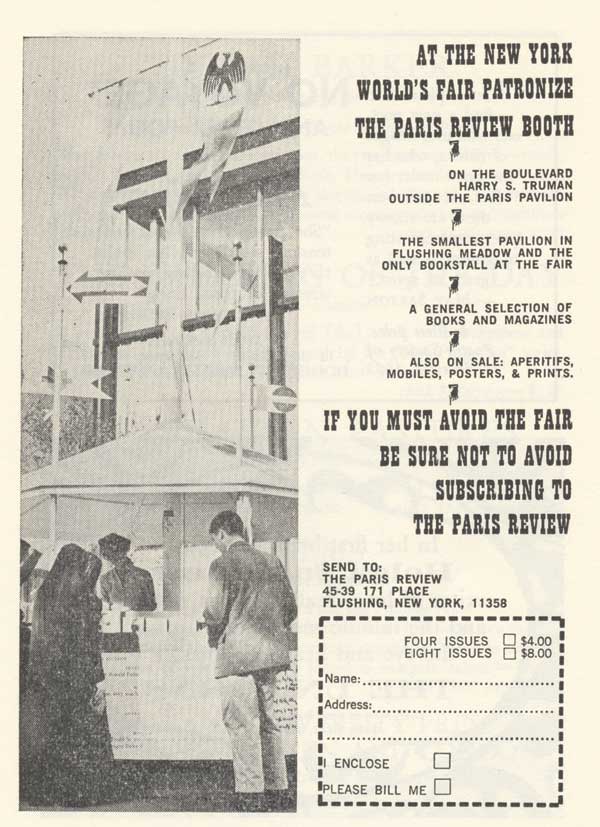
Near the beginning of the Official Guide: New York World’s Fair
1964 /1965, city planner Robert Moses asks visitors:
What is it you want? Vast forces dormant in nuggets of impris- oned sunlight? Machines that fly, think, transport, fashion, and do man’s work? Spices, perfume, ivory, apes, and peacocks? Dead Sea Scrolls?
Moses answers his own question: “We have them all.” What the World’s Fair did not have was the backing of the Bureau of International Expositions, the regulatory body based in Paris that had approved the 1962 Seattle World’s Fair. Undaunted, Moses and his businessmen backers invited private companies and corporations from across the globe to create the impression of a cosmopolitan event. Although based in France and staffed by Americans, the Paris Review was not the sort of outfit the Fair’s planners had in mind. The adver- tisement for the Paris Review booth appeared in an issue of Poetry de- voted to “work in progress.” With poems by Wendell Berry, Hayden Carruth, Robert Creeley, Robert Duncan, Ronald Johnson, Galway Kinnell, Kenneth Koch, Denise Levertov, Charles Olson, Adrienne Rich, Anne Sexton, Gary Snyder, Philip Whalen, and others, the double issue offered, like the World’s Fair, a glimpse of the future. At the same time it provided, according to editor Henry Rago:
the active anthology that Ezra Pound imagined in the earliest days of the magazine.... [When] enough poets are seen in one place, at one time, each minding his own business, some larger impressions just might be possible.
Paul Durica is a graduate student at the University of Chicago and the founder of Pocket Guide to Hell Tours and Reenactments.


